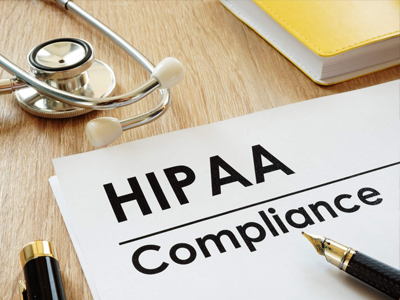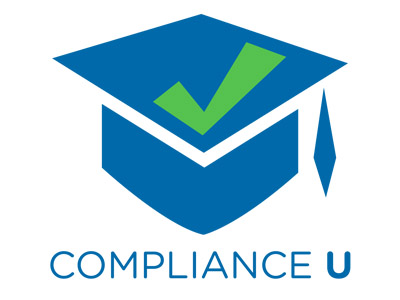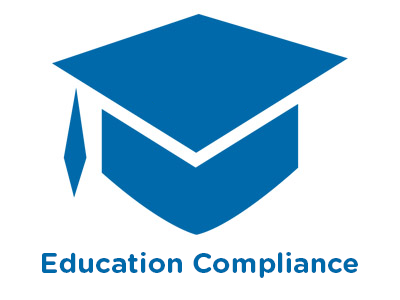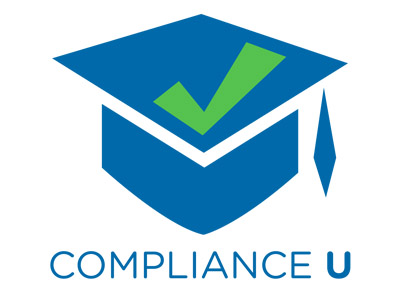 |
Understanding the Basic Concepts of HIPAA |
0.75 |
This course will give participants a basic understanding of the Health Insurance Portability and Accountability Act (HIPAA). Participants will learn what HIPAA is, how it changes the way we do our work, federal vs. state standards, patient rights, the purposes of HIPAA compliance and more. |
 |
SIDS and Other Sleep-Related Infant Deaths: Keeping Babies Safe |
1.50 |
This course will give participants a brief overview of Sudden Infant Death Syndrome (SIDS) and other sleep-related deaths. Participants will learn about recent research and statistics, the importance of child care providers, AAP SIDS Task Force recommendations, and how to implement polices in child care. |
 |
Healthy Bodies: Promoting Good Nutrition and Physical Activity in Child Care |
1.00 |
This course will give you a broad overview of how to instill healthy habits at an early age. It will provide you with information about the nutritional needs of children and the benefits and risks associated with physical activity levels. Strategies will be given to use this knowledge in the classroom. |
 |
English Language Learners |
1.00 |
This course will give you a greater understanding of the circumstances under which some English language learners came to the U.S. and the challenges they may face. Strategies for teaching language acquisition skills will be provided, and you will learn the importance of collaborating with families and communities. |
 |
Animal Behavior 4: Reliability and Validity |
1.00 |
This course will help ensure that the data you collect in animal behavior research is repeatable, consistent, and actually measures the features of a target behavior. This is called reliability and validity. |
 |
A Student Guide to Sexual Violence Prevention and Response |
0.50 |
This course will help students understand what they can do to prevent sexual violence, as well as how they can respond to survivors of sexual violence. Students will also examine the definition of bystander intervention, as well as explore how to define and identify consent.
|
 |
Bloodborne Pathogens and HIV (Short) |
0.33 |
This course will help you define Bloodborne Pathogens (BBP), identify common types, identify how BBP are transmitted and contracted, determine reasonable anticipation for encountering BBP, define an Exposure Control Plan, and define PPE, its effectiveness, and decontamination when BBP are encountered. |
 |
Customer Service Skills |
1.00 |
This course will help you develop customer service skills by teaching you how to develop and maintain a positive attitude. You will learn how to use motivation to improve customer service skills, and will go through the seven steps in the customer service process. Finally, you will discover how to react to customers’ problems and learn from them. |
 |
Individuals with Disabilities for Paraprofessionals |
2.00 |
This course will help you develop new knowledge about students with disabilities by taking you through the Special Education referral process for school-age and preschool-age children. It will also cover the referral process for early childhood programs. This course will help you understand your role as a paraprofessional in supporting these students and their teachers. It is just one out of many paraprofessional courses we offer.
Note: Please be aware that this course covers the complete process from Birth to 12th grade, which makes it quite lengthy. While your primary focus might be on Pre-K to 12th grade, it's important to understand how this process develops in the early years. |
 |
Engaging English Learner Families and Communities |
1.00 |
This course will help you go deeper and gain more examples and strategies related to some of the five tips for engaging English learners' families and communities introduced in the training. Through this online course, you will learn more tips and strategies to better engage the English learner (EL) families in your school or classroom. |
 |
Project Management - Basic: Characteristics of a Project |
2.25 |
This course will help you identify characteristics of a project’s internal and external environments, the influence stakeholders have on a project, and different organizational structures. You will also learn how to identify the critical functions, necessary skills, responsibilities, and challenges of a project manager. This course will also cover how to staff a project team, create a skills inventory, and identify the benefits of team building and of establishing a project office. |
 |
Project Management - Basic: Fundamentals of Project Management |
0.50 |
This course will help you identify the features and characteristics of a project, and identify the difference between product management and project management. You will also learn how to identify the steps and variables of the project management process, and identify some common pitfalls to avoid. |
 |
Computer Basics |
2.00 |
This course will help you understand and use modern computers. It covers topics from hardware and software to different types of computers, operating systems, applications, and “the cloud.” |
 |
Down Syndrome |
0.50 |
This course will help you understand the unique characteristics that children with Down syndrome possess and the challenges that they face. It will provide you with knowledge on how to create the best learning environment possible to meet their needs by giving you specific ways to plan your curriculum and ways in which you can encourage communication. You will feel prepared to make accommodations to welcome children with Down syndrome into your classroom. |
 |
Animal Welfare Professional |
2.00 |
This course will increase your understand of animal welfare, as well as best practices to help ensure high levels of welfare for the animals within your professional care. Upon completion of the course, you will be able to: define animal welfare and describe the animal welfare continuum, name at least three laws/acts pertaining to animal welfare and how they contributed to improving the welfare of animals, define stress, identify the difference between acute and chronic stress and their relationship to animal welfare, identify why it is important to focus on both positive and negative indicators of animal welfare, identify the differences between inputs and outputs for animal welfare, identify three potential positive indicators of animal welfare, identify three potential negative indicators of animal welfare, compare/contrast the Five Freedoms and the Five Opportunities to Thrive, Identify three three best practices to help ensure high levels of welfare, identify three benefits of ensuring high levels of welfare, be able to differentiate between subjective, opinion-based animal welfare concerns and objective, evidence-based animal welfare concerns, define animal rights, and identify the difference between animal welfare and animal rights. |
 |
The NoFEAR Act (Corrections) |
0.25 |
This course will inform participants of the Notification and Federal Employee Antidiscrimination and Retaliation Act, also known as the NoFEAR Act. At the conclusion of this course, participants should understand the basic provisions of the NoFEAR Act, know what Antidiscrimination and Whistleblower Protection Laws protect them, and understand how to file a complaint alleging discrimination, retaliation, or a violation of the Whistleblower Protection Laws. |
 |
Engaging High School Youth in College & Career Readiness |
1.00 |
This course will introduce participants to the College & Career Readiness Toolkit, developed by the Maryland Out-of-School Time (MOST) Network, as well as developmentally appropriate activities and considerations for implementing college & career readiness with high school youth in an out-of-school time setting. |
 |
Engaging Middle School Youth in College & Career Readiness |
1.00 |
This course will introduce participants to the College & Career Readiness Toolkit, developed by the Maryland Out-of-School Time (MOST) Network, as well as developmentally appropriate activities and considerations for implementing college & career readiness with middle school youth in an out-of-school time setting. |
 |
Fire Prevention Principles |
1.00 |
This course will introduce the firefighter to the modern principles of fire safety. Just as the fire service has evolved since colonial times, so has the professional approach to fire prevention and safety. The fire service is at the heart of the current fire safety program, and firefighters must understand the concepts and principles at the core of these programs. This introductory course will describe these concepts and principles as well as identify where and how the firefighter fits into these programs. The clock time for this course is approximately one hour. |
 |
Birds |
2.00 |
This course will provide an introduction to birds, including an overview of physical characteristics, habitat, behavior, reproduction and the conservation efforts dedicated to protecting this taxonomic group. |
 |
Cats |
1.00 |
This course will provide an introduction to cats, including an overview of physical characteristics, habitat, behavior, reproduction and the conservation efforts dedicated to protecting this taxonomic group. |
 |
Elephants |
2.00 |
This course will provide an introduction to elephants, including an overview of physical characteristics, habitat, behavior, reproduction and the conservation efforts dedicated to protecting this species. |
 |
Giant Pandas |
1.50 |
This course will provide an introduction to giant pandas, including an overview of physical characteristics, habitat, behavior, reproduction and the conservation efforts dedicated to protecting this species. |
 |
Giraffes |
2.00 |
This course will provide an introduction to giraffes, including an overview of physical characteristics, habitat, behavior, reproduction and the conservation efforts dedicated to protecting this species. |
 |
Gorillas |
1.00 |
This course will provide an introduction to gorillas, including an overview of physical characteristics, habitat, behavior, reproduction and the conservation efforts dedicated to protecting this species. |


























